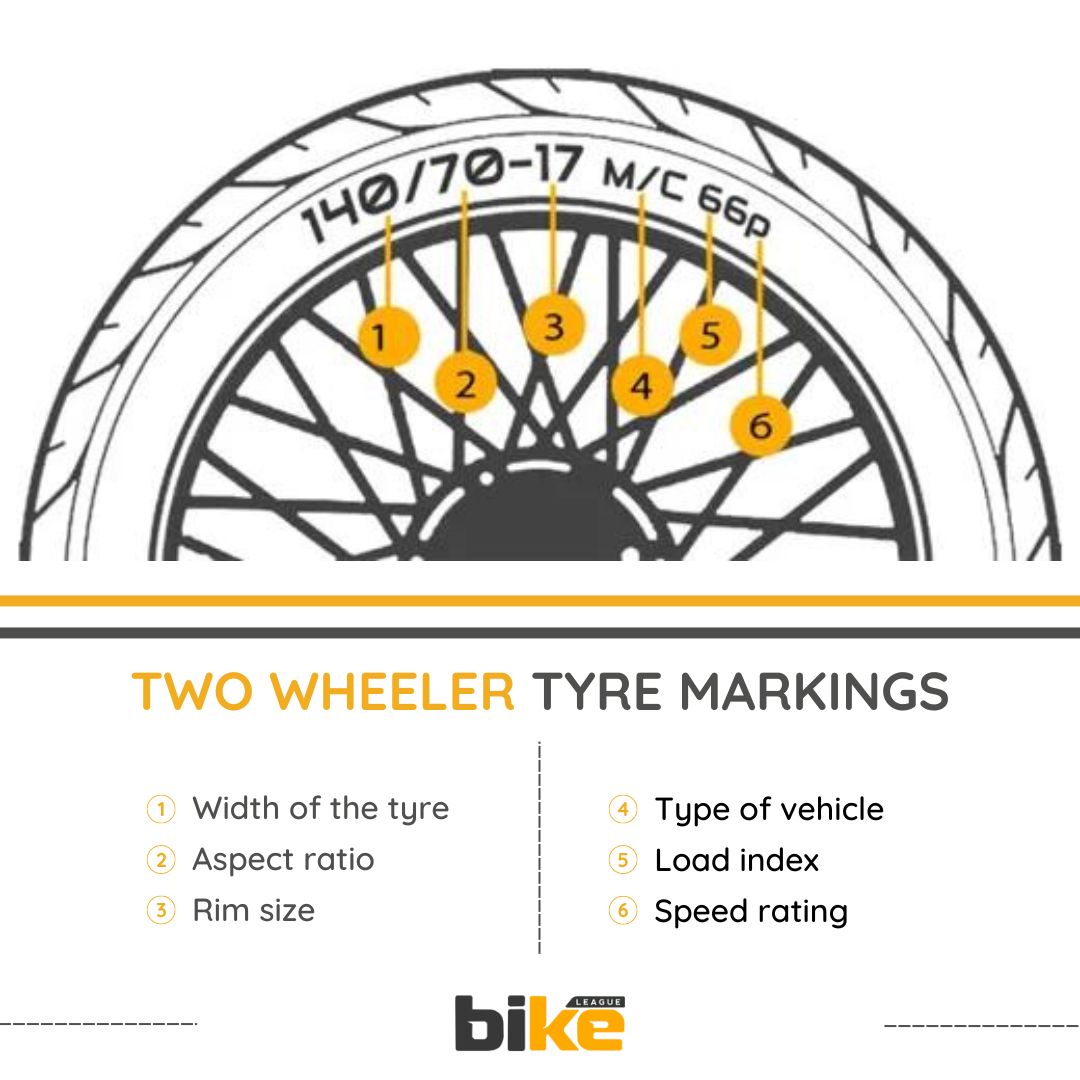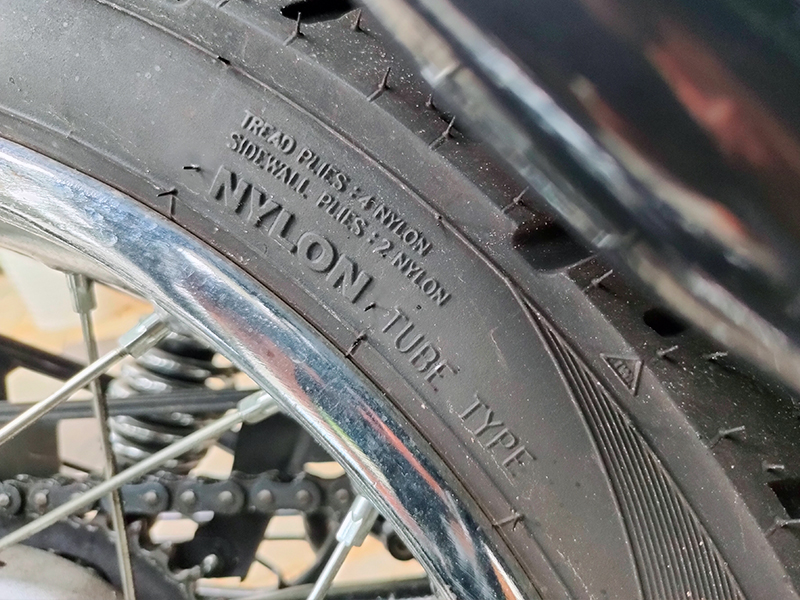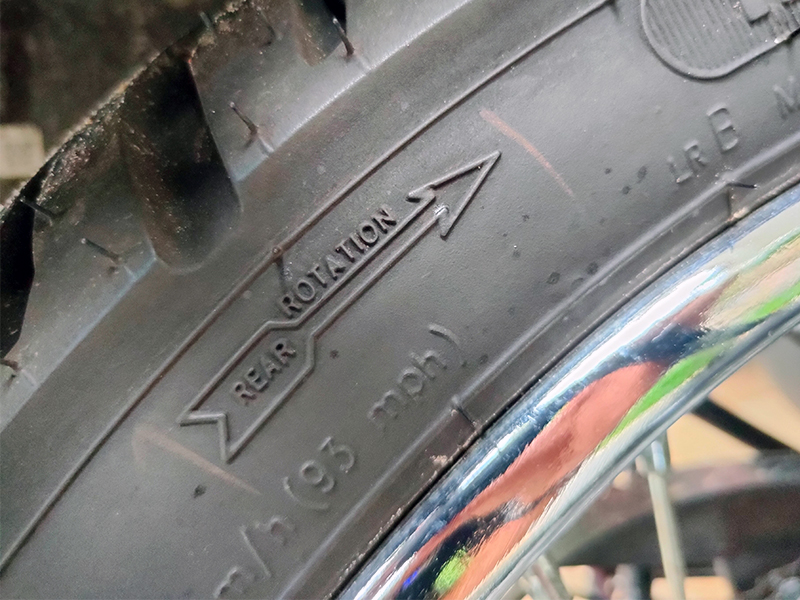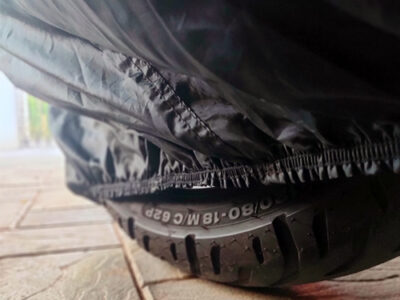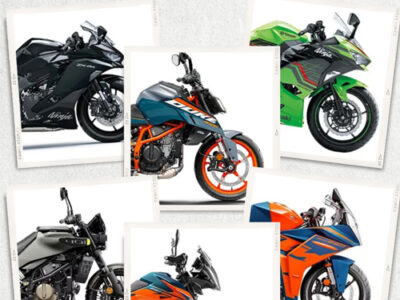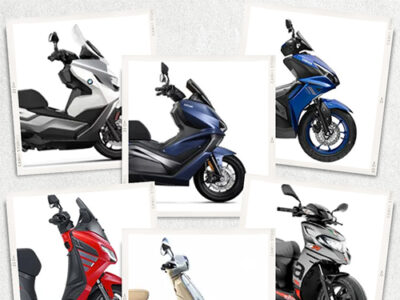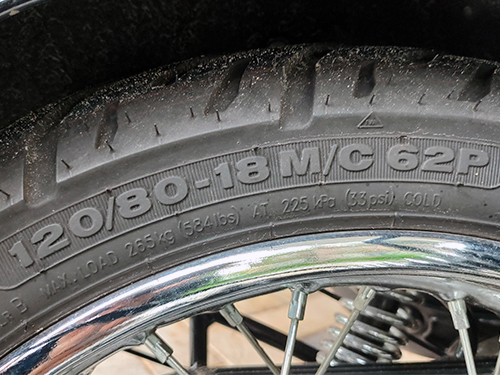
Long story short – Do not select two-wheeler tyres solely based on brand, but looking at sizing tyres and how to read motorcycle tyre code/markings is vital too. What shoes do for us is what the wheels do for the two-wheelers.When selecting a bike tyre, it’s essential to check the speed rating, rim size, load index, etc. Here we clarify these aspects.
When a pre-installed two wheeler tyre is worn out, or you plan to change with a new set of tyres, there are some things that you need to look beyond the brand name.It is essential to read the motorcycle tyre code/markings carefully before making a purchase of a bike tyre. Motorcycle tyre code is all we need to look into, and this tells the entire story. Also, we need to consider customer feedback and technical inputs from the workshop technicians.When checking tyre compatibility, you should always read the motorcycle tyre code/markings to verify the width, aspect ratio, and construction type of the bike tyre. If a wrong set of tyres is installed, it affects performance, stability and safety. So let us make things easier for you with pictures and simple explanations.
Straight to the matter. Let’s delve deep into how to read motorcycle tyre code/markings and what you should prioritize. There are five main values that we need to look at. They are :
- Width of the tyre
- Aspect ratio (between height and width)
- Rim size
- Type of vehicle
- Load index
- bike tyre Speed rating
The picture shows the bike tyre markings on a real two wheeler tyre.
two wheeler tyre code deciphered
1. Width of the tyre
The first two or three digits of the bike tyre markings mention the width in millimetres with correct tyre inflation. 140 is the width in our above image.
2. Aspect Ratio
The next digits represent the height mentioned as a percentage of the tyre’s width. Lower aspect ratios (e.g., 40, 50) indicate sportier tyres with shorter sidewalls for better handling and grip. Higher aspect ratios (e.g., 60, 70) offer more comfort and stability for everyday riding.
It is 70 in our image, meaning the tyre sidewall’s height is 70% of the width.
3. Type of construction (Not always present)
Found along with the rim size, which explains the construction method used for tyre manufacturing.
- B – bias belt or bias ply construction (older design, less common)
- D – Diagonal tyres (less common, combines bias and radial features)
- R – Radial tyres (most common, offer better handling and comfort)
4. Type of Vehicle
M/C in above image means motorcycle.
5. Rim size
Digits adjacent to the construction type mention rim size or wheel diameter in inches. 17 is the rim size of the tyre in the above pic.
6. Load Index of two wheeler tyre
As the name mentions, it is the maximum weight the two wheeler tyre can hold or carry. In the above image, it is 66. Check below motorcycle tyre load index chart
| Load Index | Load in Kg |
|---|---|
| 62 | 265 |
| 63 | 272 |
| 64 | 280 |
| 65 | 290 |
| 66 | 300 |
| 67 | 307 |
| 68 | 315 |
| 69 | 325 |
| 70 | 335 |
| 71 | 345 |
| 72 | 355 |
| 73 | 365 |
| 74 | 375 |
| 75 | 387 |
7. Speed rating
Maximum speed at which tyre can operate; Upgrading to a higher speed rating tyre can improve your bike’s stability at high speeds.check below bike tyre speed rating chart below
| Code | km/h |
|---|---|
| A1 | 5 |
| A2 | 10 |
| A3 | 15 |
| A4 | 20 |
| A5 | 25 |
| A6 | 30 |
| A7 | 35 |
| A8 | 40 |
| B | 50 |
| C | 60 |
| D | 65 |
| E | 70 |
| F | 80 |
| G | 90 |
| J | 100 |
| K | 110 |
| L | 120 |
| M | 130 |
| N | 140 |
| P | 150 |
| Q | 160 |
| R | 170 |
| S | 180 |
| T | 190 |
| U | 200 |
| H | 210 |
| V | 240 |
| Z | over 240 |
| W | 270 |
| (W) | over 270 |
| Y | 300 |
| (Y) | over 300 |
8. Additional Markings
- Tubeless (TL) or Tube-Type (TT): Indicates whether the tyre requires a tube or not.
- Direction of Rotation: An arrow showing the intended direction of tyre rotation for optimal performance.
- Tread Wear Indicators (TWI): Small raised bars inside the tread grooves indicate the legal wear limit.
- Date Code: A four-digit code indicating the week and year of manufacture (e.g., “2234” means the tyre was made in the 34th week of 2022).
Factors we need to consider along with two wheeler tyre code
- Brand name and the tyre model’s past performance is vital to consider. For that, we need to take inputs from motorcycle technicians, customers and Google, too.
- Also, select which type of tyre is suited for your motorcycle, like Tube-Type (TT) or Tubeless (TL).
- Nowadays, most motorcycles come fitted with tubeless tyres as they have many more pros than tube tyres.
- Rider demands and road conditions also need to be considered. For example, the speed index comes into the equation when tyres are meant for race tracks.
- Try to stick with tyres with the same codes recommended in the motorcycle owner’s manual to extract maximum performance.
If possible, check the construction type of tyres, like bias belts and diagonal or radial tyres.
FAQ about how to read two wheeler tyre code
What does the “B” mean on a two wheeler tyre?
The letter “B” on a motorcycle tyre code/markings can have two different meanings, depending on the context:
1. Bias-ply construction:
In the traditional tyre construction of bike markings, “B” stands for “bias-ply.” This refers to the tyre’s internal structure, where fabric cords are laid diagonally across the carcass (like a belt), offering a strong and stable construction.
2. Bias-belted construction:
Sometimes, “B” can also stand for “bias-belted” construction. This is a hybrid design that combines bias-ply and radial features.
What does 67h mean on a two wheeler tyre?
The “67H” marking on your motorcycle tyre is a combination of two separate codes: the load index (67) and the speed index (H). The load index number indicates the maximum weight the tyre can safely carry at its recommended inflation pressure. The speed index letter denotes the maximum speed the tyre is rated for when carrying its maximum load.
Myths and misconceptions about two wheeler tyre code
Myth 1: Tyres with a Higher Speed Rating Always Perform Better
Reality: A higher speed rating of bike tyre does not necessarily mean better performance for everyday riding. Speed ratings indicate the maximum speed a tyre can handle.For high-performance bikes, opting a tyre with a suitable speed rating is essential for safety.Still, other factors like tread design and rubber compound are more critical for performance.
Myth 2: Tyres with a Higher Load Index Provide Better Handling
Reality: The load index indicates the maximum weight a tyre can support, not its handling characteristics. While it is essential to choose a tyre with an appropriate load index for your vehicle, it does not directly correlate with better handling.
Myth 3: Tyres with a Lower Aspect Ratio Are Always Better for Performance
Reality: Lower aspect ratio tyres can improve handling and stability, but they also make the ride stiffer and less comfortable. The choice of aspect ratio should balance performance needs with comfort.
Myth 4: Tyres with a Larger Diameter Always Improve Performance
Reality: Larger diameter tyres can affect the bike’s handling and speedometer accuracy. Sticking to the manufacturer’s recommended tyre size is essential for optimal performance.
Myth 5: Tyre Rotation is Not Necessary
Reality: Regular tyre rotation helps in even wear and extends the tyre’s life. Neglecting tyre rotation can lead to uneven wear and reduced performance.
Other related articles from Bikeleague India
- Best bike tyre brands for your motorcycle in India
- Types of two wheeler tyres explained
- Motorcycle helmet in India – All in one buying guide
- What is Nitrogen & air filling in bikes? – Doubts & FAQ
- ADMS DB
Conclusion
Most motorcycle owners need to pay more attention to the details and get fooled or lured by technicians in shops and showrooms. So, all you have to do is learn how to read bike tyre markings from this article and stay safe on your motorcycle. As mentioned at the beginning of the article, tyres are like shoes, so the right size matters. Last but not least, always wear a helmet and follow road rules.To avoid confusion about tyre purchasings, read this bike tyre code article carefully.
If you have any other doubts or queries, email us at bikeleague2017@gmail.com. You can also share your doubts or opinions in the comments section below. We are always eager to help and assist you. Also, here are several social media platforms of Bikeleague India to raise your suspicions.

